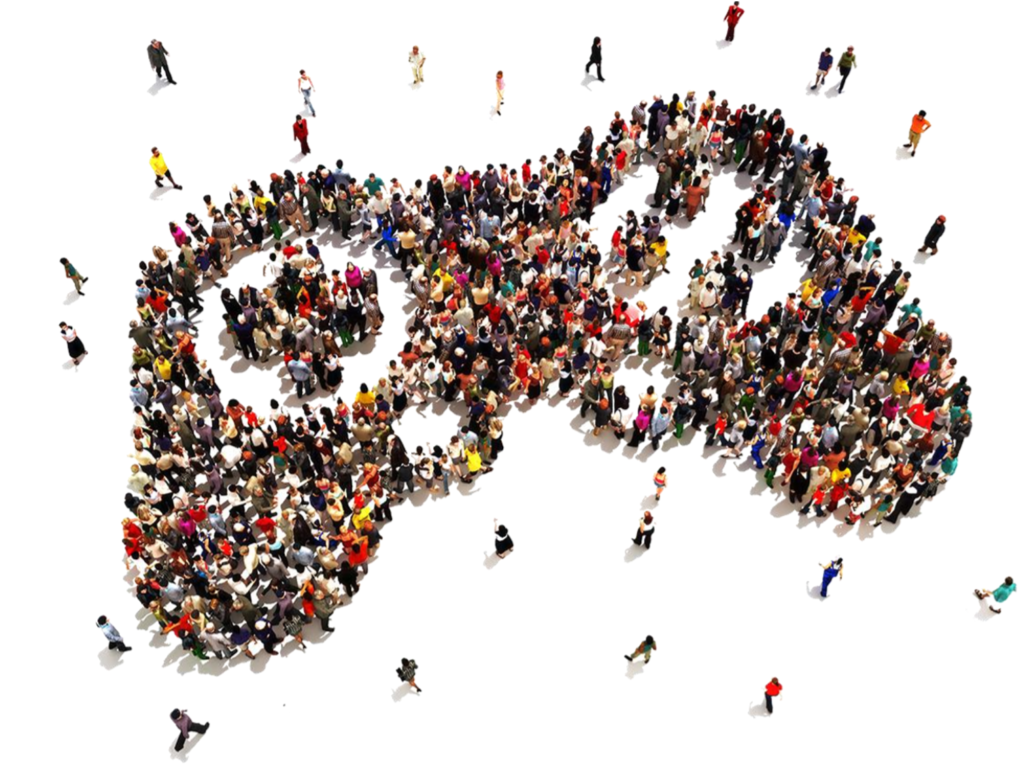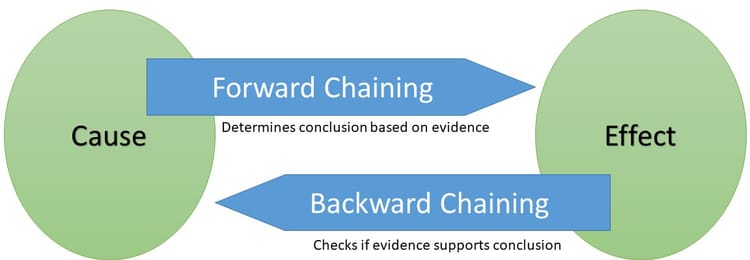Messy Society

Our world is amazing and terrifying and everything in between. This week’s selection of new research looks at how society affects us as individuals, and how our individual choices give rise to society.
Bright Light, Big City...Good Mood
Bigger Cities = Higher Rates of Depression. It's a simple equation...but wrong. Depression rises as communities grow from villages to towns to cities, but then something amazing happens: In the biggest, densest metros, depression rates fall…
Evidence and theory for lower rates of depression in larger US urban areas
Social connections in smaller communities are rarely diverse, but their strength and number augment resilience to life's challenges. Those connections weaken and diffuse in suburban and urban communities, but...
...the density of massive cities increases the number of connections, like a smaller community. And it also crucially offers residents diverse social connections, unique to dense cities, decorrelating stress and mood across subnetworks...
"Cultural enrichment", growing up in communities with many different, constructively interacting cultures, is a powerful and understudied form of developmental enrichment...
I've long predicted that it has strong positive effects on socioemotional and cognitive development. Anyone want to collaborate on a study?
Collectivism vs Tightness
Sociology's distinction between Collectivist-Individualist vs Tightness-Looseness is truly fascinating. It suggests that "we're all in it together" is not the same as "do what you're told", and "don't tread on me" need not imply "it's OK to be different". Take a recent paper on COVID-19…
Collectivism predicts mask use during COVID-19
"mask usage was higher in collectivistic (vs individualistic) countries and US states. This relationship holds controlling for political affiliation, demographics, population density, SES, health coverage, government response, and cultural tightness–looseness"…
.@arthurbrooks (from @atlantic) put #individualism in 3 dimensions:
- belief in one’s responsibility for one's actions
- belief in one’s uniqueness
- tendency to set and strive for one’s personal goals.
The link between self-reliance and well-being
but…
Those 3 dimensions are problematic; they don't (for me) describe poles wrt their compliments. All 3 seem to be "yes, and" rather than "either, or". I am responsible for my own actions *and* I am responsible for how those actions affect those around me…
That is not a statement that I am low in either belief but that I hold both simultaneously. I am unique, and that uniqueness is both a function of my community and makes my community richer. I have wildly ambitious personal goals and those goals are bigger than I am…
Collective-Individual vs Tight-Loose is messier than I originally thought. Perhaps these aren't well measured in the first place. Derived from forced choice surveys soliciting (typically) positive self-descriptions, they surely don't capture the underlying interdependencies well…
Can someone make a scatterplot of place with tightness-looseness vs collectivist-individualist? I have intuitions about where certain regions, nations, and metros fall (and where I'd be most at home)…
On a final, tangential note, thinking about Collective-Individual vs Tight-Loose makes me think about
Liberalism: "everyone being able to be themselves and follow their desires is good"
vs
Liberalism: "I should be allowed to do whatever they want because only what I want matters"
Societal Intervention
At a societal level, "*long term orientation* increases the effect of economic freedom on income per capita, whereas *uncertainty avoidance* weakens the positive relationship…"
My next project: is it possible to intervene on an entire society?
The moderating role of culture on the benefits of economic freedom: Cross-country analysis
In-Groups, Out-Groups, and Power
“East Asians but not South Asians” are underrepresented in leadership positions in the US. A social network analysis of business and law school students suggested one factor: social network diversity.
“Compared to South Asians, Latinos, and Whites, East Asians exhibited higher ethnic homophily” (fewer connections with non-East Asian students) which lowered the likelihood of being “nominated and elected as leaders.“
The study doesn’t rule out other factors, but “effects occurred for both East Asian internationals and East Asian Americans” and were “robust after accounting for variables such as assertiveness..., network centrality, English proficiency, demographics, and personality.”
Robuts aint good Christians!
Across labor markets, “individuals more exposed to automation tend to display higher support for the radical right.”
“Individual vulnerability to industrial robot adoption increases support for the radical right”
Most workers in the industrialized world believe a promise has been broken—higher productivity = a better life...and they are right.
But automation-related #deprofessionalization also strongly interacts with racial and social status threat. Authoritarianism needs someone to blame.
Facial Impressions Are Predicted by the Structure of Group Stereotypes
In AI research I did years ago, smiling and youthfulness strongly correlated with femininity in Facebook profile photos—and (weirdly), glasses-wearing with East Asian-ness. A recent paper confirms what my work suggested, “people’s impressions of others’ faces are driven not only by [face shape and expressions] but also by learned stereotypes about social groups.”
“Facial Impressions Are Predicted by the Structure of Group Stereotypes”
Body Worn Cameras
Body worn cameras (BWCs) “led to a significant decrease in the dismissal of investigations due to insufficient evidence...as well as a significant increase in disciplinary actions against police officers.”
“Body-Worn Cameras and Adjudication of Citizen Complaints of Police Misconduct”
Further, “disparities in complaints across racial groups...fade away with the implementation of BWCs.”
That’s great, but now we wait to see whether norms adapt to improve policing or undermine BWCs.
From job applications to puppy adoptions
In “The Tax on being Different”, I explore how differences as subtle as “Joe vs Jose” can affect educational, career, and life outcomes. I neglected to look at puppy adoptions.
In the US, shelter dogs whose names are “perceived as White” are adopted faster than those “perceived as perceived as nonhuman (e.g., Fluffy)”.
Perhaps I’ll title this new chapter “Buffy vs Fluffy”.
When a Name Gives You Pause: Racialized Names and Time to Adoption in a County Dog Shelter
There is an inevitably racial side to this story as well. “Perceptions of Black names are likewise tied to slower…adoption” of shelter dogs, particularly “among pit bulls”.
Moved to tears
Big cities used to lift productivity and wages for everyone, regardless of education attainment. Today, however, “non-college workers now effectively face a housing-inclusive urban wage penalty” even as wages grown with metro size for those with a college education.
The result is that “native-born cross-state migrants, especially non-college workers, have become less likely to live in the highest-productivity areas”, largely because combination of “housing costs” and routine labor wage suppression eat up any gains.
Of course, I have other questions:
- How much is driven by education vs meta-learning?
- Why are non-native immigrants more likely to move to higher-economic mobility neighborhoods?
Rent control is a technology
Though you may not think of public policies this way, rent control is a technology.
And as with all technologies those who need it the least are those best able to make use of it.
Robbing Peter to Pay Paul? The Redistribution of Wealth Caused by Rent Control
The research indicates that the “tenants who gained the most from rent control had higher incomes and were more likely to be white”, while the “owners who lost the most had lower incomes and were more likely to be minorities”.
People solve problems; technologies are just tools. It's how we use those tools that matters.
Facial Impressions Are Predicted by the Structure of Group Stereotypes
In AI research I did years ago, smiling and youthfulness strongly correlated with femininity in Facebook profile photos—and (weirdly), glasses-wearing with East Asian-ness. A recent paper confirms what my work suggested, “people’s impressions of others’ faces are driven not only by [face shape and expressions] but also by learned stereotypes about social groups.”
“Facial Impressions Are Predicted by the Structure of Group Stereotypes”
Body Worn Cameras
Body worn cameras (BWCs) “led to a significant decrease in the dismissal of investigations due to insufficient evidence...as well as a significant increase in disciplinary actions against police officers.”
“Body-Worn Cameras and Adjudication of Citizen Complaints of Police Misconduct”
Further, “disparities in complaints across racial groups...fade away with the implementation of BWCs.”
That’s great, but now we wait to see whether norms adapt to improve policing or undermine BWCs.
From job applications to puppy adoptions
In “The Tax on being Different”, I explore how differences as subtle as “Joe vs Jose” can affect educational, career, and life outcomes. I neglected to look at puppy adoptions.
In the US, shelter dogs whose names are “perceived as White” are adopted faster than those “perceived as perceived as nonhuman (e.g., Fluffy)”.
Perhaps I’ll title this new chapter “Buffy vs Fluffy”.
When a Name Gives You Pause: Racialized Names and Time to Adoption in a County Dog Shelter
There is an inevitably racial side to this story as well. “Perceptions of Black names are likewise tied to slower…adoption” of shelter dogs, particularly “among pit bulls”.
Moved to tears
Big cities used to lift productivity and wages for everyone, regardless of education attainment. Today, however, “non-college workers now effectively face a housing-inclusive urban wage penalty” even as wages grown with metro size for those with a college education.
The result is that “native-born cross-state migrants, especially non-college workers, have become less likely to live in the highest-productivity areas”, largely because combination of “housing costs” and routine labor wage suppression eat up any gains.
Of course, I have other questions:
- How much is driven by education vs meta-learning?
- Why are non-native immigrants more likely to move to higher-economic mobility neighborhoods?
Rent control is a technology
Though you may not think of public policies this way, rent control is a technology.
And as with all technologies those who need it the least are those best able to make use of it.
Robbing Peter to Pay Paul? The Redistribution of Wealth Caused by Rent Control
The research indicates that the “tenants who gained the most from rent control had higher incomes and were more likely to be white”, while the “owners who lost the most had lower incomes and were more likely to be minorities”.
People solve problems; technologies are just tools. It's how we use those tools that matters.



